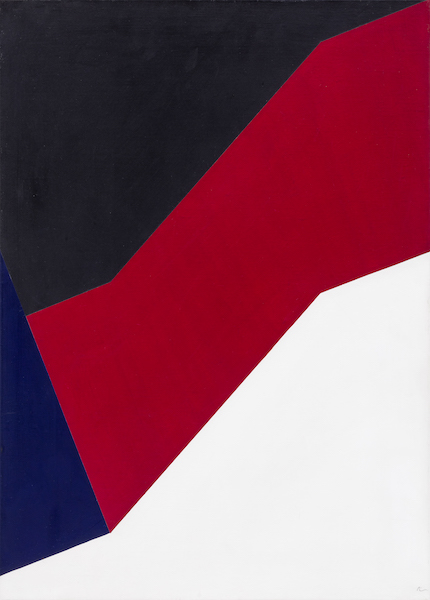Biography
He attended the Hungarian Academy of Fine Arts between 1958-1963, his teacher was Gyula Hincz. He was associated with the Zuglói Kör, then in 1964 he traveled to France on a study trip at the invitation of the Károlyi Mihály Foundation, he painted at the foundation's artist colony in Vence, and then he visited Paris in 1966. In 1972, with a scholarship from the Folkwang Museum, he painted in Essen, Germany. In 1976, he created in Kuopio, Finland, and in 1977, in Moravany, Czech Republic. In the mid-1990s, he visited Western Europe again, Rome, Florence and Lisbon. He works in Budapest and in Feketebács near Lake Balaton.
Nádler is one of the founders of the neo-avant-garde art movement that started in the mid-60s, a member of the Iparterv group and Budapesti Műhely. True to the era, he went through the strictly structural hard edge school, in the geometric phase of his painting the use of stylized folklore elements, avar motifs, and colors played a major role, until at the very beginning of the 80s he turned back to the lyrically emotional, more resolved painting of his early career.
In the 1970s, music and the landscape had a great influence on the development of his painting: through Bartók's music, he came closer to the formal world of folk art, and discovered the creative behavior of archaic man. Steve Reich's music and minimal music created a great opportunity for him to paint spontaneously and compose freely. In this period, his palette brightened, white and pale yellow were the dominant colors on the canvases. In Nádler's art, a motif from the history of painting, Malevich's cross, plays an important role, which is connected to the forms developed in his earlier, geometric works; later it kept this symbolic form. Reevaluating and reshaping the geometric structure, he incorporated it into his lyrical, new painting. The form of the expression changed continuously, even when in the late 70's stricter geometry became stronger in his pictures. The form dedicated to Malevich is actually an emblem of self-identification, which is both a connection point to universal art and, on the other hand, a concrete sign of the private myth, constantly referring back to Nike (1963).
Nádler again played a significant role in the new painting movement of the 80s, similar to the neo-avant-garde peers of his generation. It is a specifically Hungarian characteristic that the movement of young painters and the aspirations of those who came before them are connected. In this period, the landscape as an influencing and inspiring influence is a transitional component of his art. His repeated stays in Italy in the 90s enriched his art with new colors and forms, which can be clearly seen in his Rome and Florence series. In the second half of the 90s, his sensual painting moved again in the direction of geometry. He also creates graphics and sculptures.

